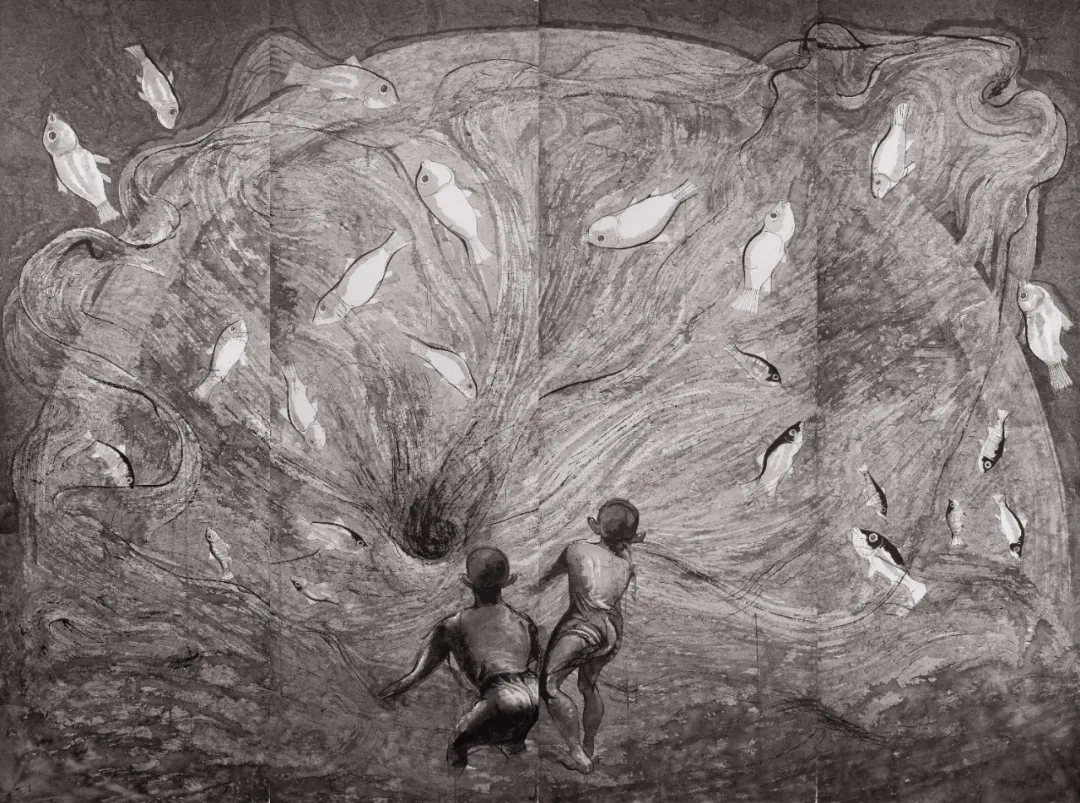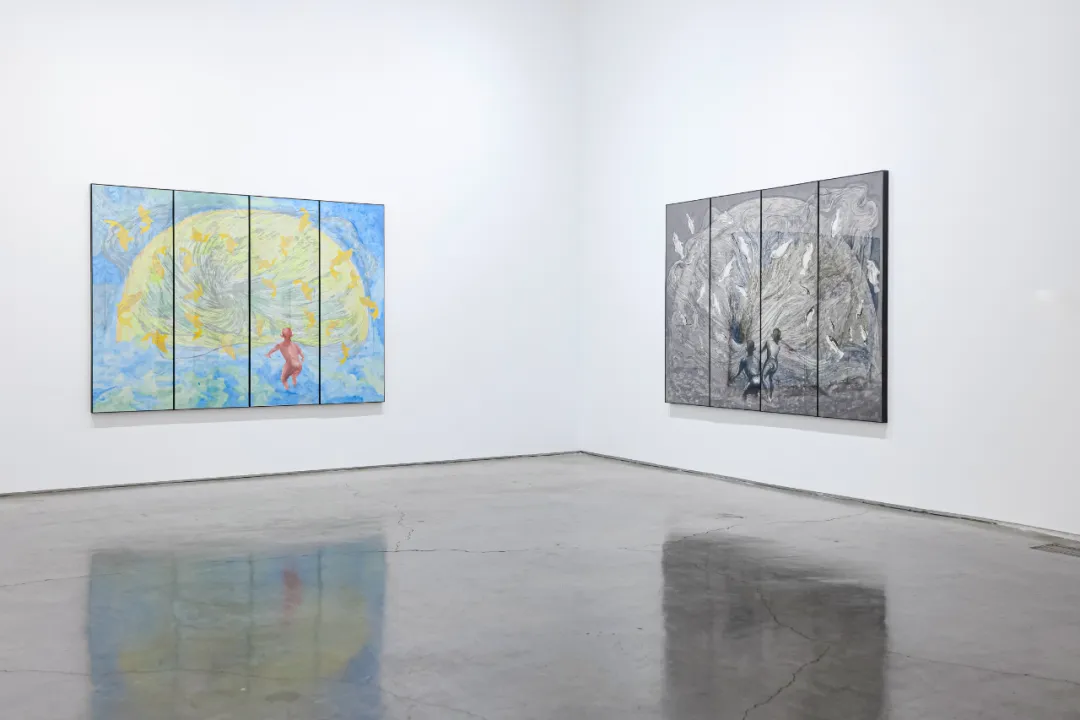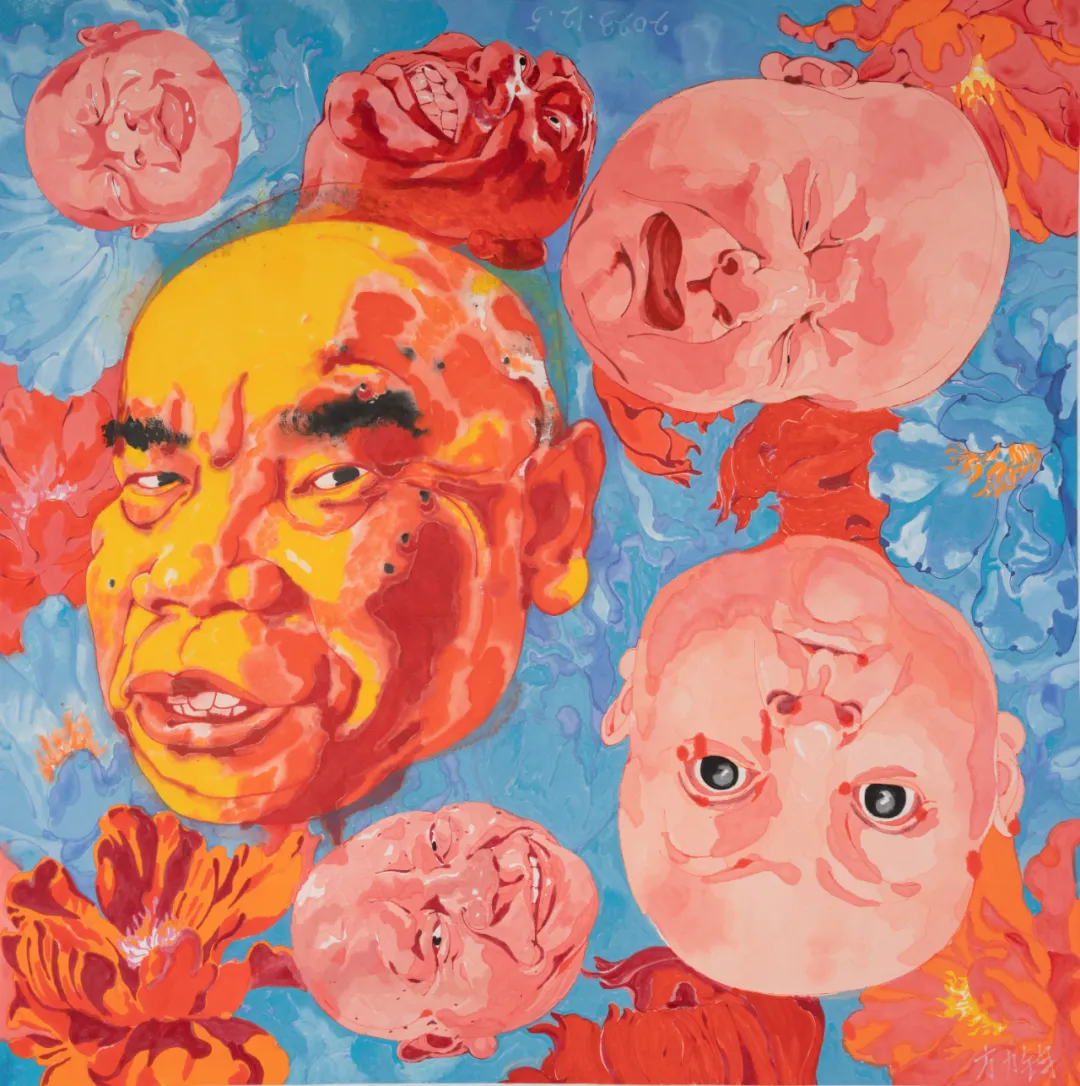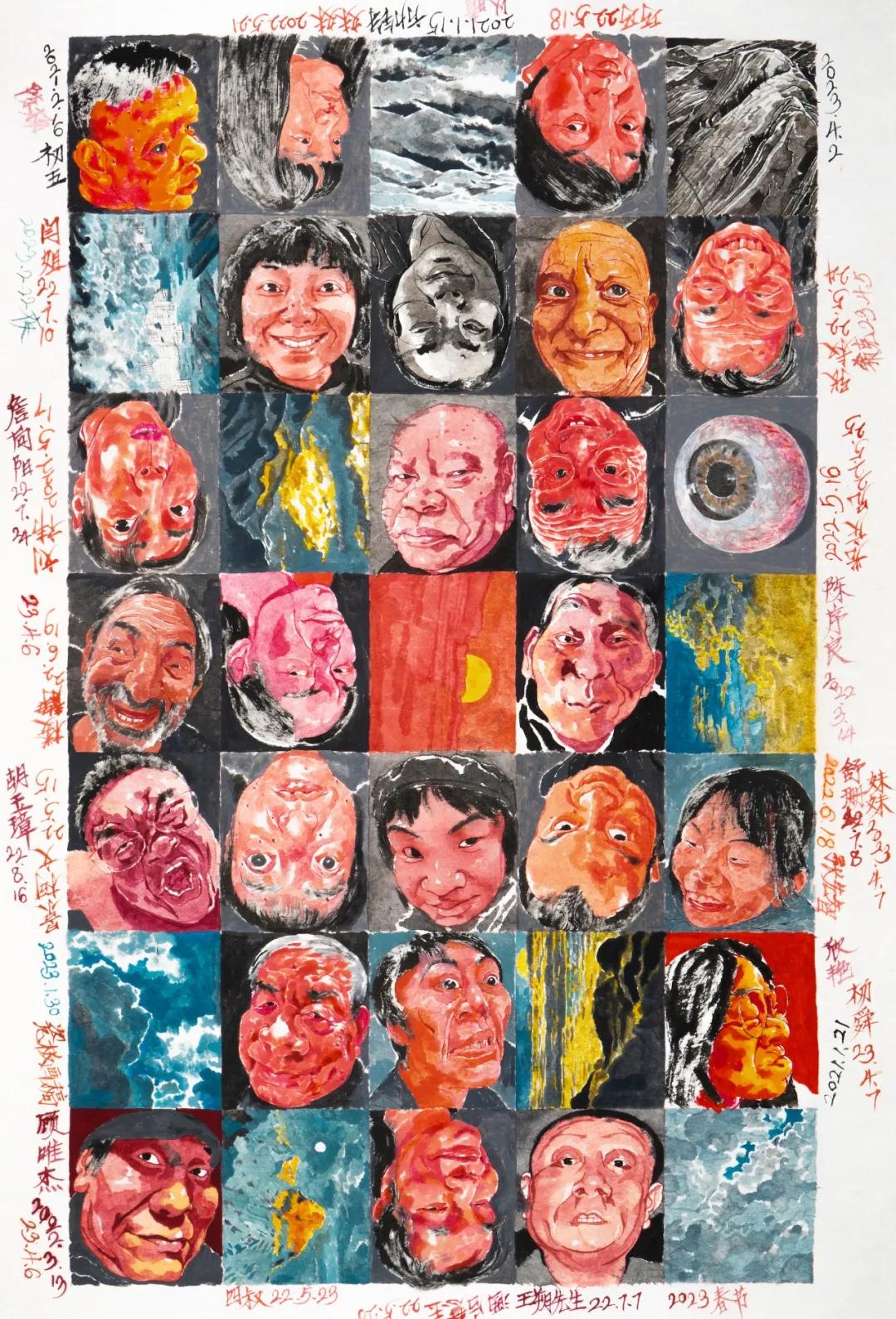CURATOR CRITIC
Confronting Human Nature: The Subjects of Fang Lijun
Text / Du Xiyun
If everyone isn’t beautiful, then no one is.
— Andy Warhol
Expressions and communications lay their foundations in two essential elements: 1) sincerity; and 2) truthfulness. Sincerity is the foundation of emotional impact, especially in artistic expression. Works of art that genuinely reveal the artist's inner state often possess a unique power to resonate with others.
Given his varied, abundant life experiences and sensitive spirit, Fang Lijun realized early on that the secrets of the world lie in human nature. The dazzling manifestations of life and the shifting dynamics of history are, always, driven by human impulses. Therefore, exploring and expressing human nature has become a persisting theme in his works, manifesting through various media from the past to the present. Starting with sketches, moving to woodblock prints, flourishing in oil paintings, extending to sculptures and installations, and more recently porcelain paintings, his artistic language remains open and diverse, all aimed at pondering and uncovering the secrets of humanity and sharing them candidly with his audiences.
Born in 1963 in Handan, Hebei, Fang Lijun's personal experiences are intertwined with the relentless wave of his times. The ebbs and flows of life, along with the joys and sorrows of gains and losses, materialized within his inner world into a visual expression that speaks to the present state of humanity. For the artist, human nature is never abstract—it is a concrete reflection of specific contexts, reflected in vivid physical forms—from posture and stance to facial expressions. Fang attempts to express what he sees and thinks with honesty and confidence, striving for precision in his expression, as a responsibility to the truth. Each individual's perception and understanding of the truth may differ due to variations in sensitivity and perspectives.
Fang Lijun once recalled a moment of "epiphany" during a life drawing class in college: "Arriving late, I could only sit nearby. The light fell on the model, and her body was radiating warmth; I could hear her breathing. Suddenly, in the conventional processes of choosing composition and angle, I realized that none of these aspects were significant compared to the model's inherent organic warmth, elasticity, and fluidity—factors that are often overlooked or discarded." Being close to the model allowed him to truly grasp the vitality of life, the temperature of flesh, and the characteristics and tendencies of human nature.
Since the secrets of the world lie in human nature, Fang Lijun consciously set the exploration of humanity as his primary focus. His artistic agency has evolved to strip bare the exterior of his complex subjects and to reveal their essence. However, human nature is immensely perplexing and ever-changing—no one can fully comprehend it? Driven by a strong curiosity, Fang Lijun loves to travel, engaging with unfamiliar circles and making friends. Through countless interactions, he became closer to his subjects and fostered deep mutual understanding, which allowed the complexity of human nature reveals itself in the artistic process. From his early autobiographical paintings, which were almost like self-examination in front of a mirror, to creating various symbolic scenarios—simultaneously grand and minutiae—his recent works feature numerous portraits of family and friends, together forming a “realistic” tableau of life.
Someone once remarked about Keigo Higashino's The Devotion of Suspect X: "There are two things in this world that cannot be looked at directly: the sun and the human mind." This statement resonates deeply with many. To not only face human nature but to express it in an aesthetically compelling way can risk crossing societal taboos. Everyone yearns for the beauty of humanity, even if they know it is a mere fantasy; many prefer to remain in this dream rather than be awakened, especially by others. Born in 1953, South African painter Marlene Dumas shocks the public with her piercing insights into human suffering and despair: “Art does not only create beauty. I create the grotesque, perhaps I do not understand the true definition of beauty.” Life and truth can often be unsettling and at times, disappointing. However, one’s wisdom arises from the ability to recognize the truth. To please your audiences by avoiding, concealing, or embellishing the truth is insincere, ethically questionable, and intellectually corrupting. Artists like Fang Lijung continue to engage with the truth, unearthing its essence through an aesthetic lens.
He often employs various techniques to intentionally emphasize certain characteristics of people and objects, bringing to light the elusive secrets hidden within. This approach reflects his keen observation. When audiences open themselves to their feelings and engage in self-reflection—especially in relation to their own experiences—they can better appreciate the accuracy and depth of Fang Lijun's exploration of human nature, thereby validating the energy present in his work. Under the assumption that human nature tends toward goodness, Fang Lijun's art may sometimes make others uncomfortable, as certain unease lurks beneath his seemingly jolly canvases. His works also provoke discomfort, as people are often quick to notice the darkness in others while rarely engaging in self-examination. "Why do you see the speck in your neighbor's eye, but do not notice the log in your own eye? Or how can you say to your neighbor, 'Let me take the speck out of your eye' while the log is in your own eye? You hypocrite, first take the log out of your own eye, and then you will see clearly to take the speck out of your neighbor's eye." (Matthew 7:3-5).
In this regard, Fang Lijun is unflinching to showcase his sincerity and vision. Among his numerous works, self-examination stands out as the primary focus; he is unafraid to expose his inner truths. In his artistic world, he treats himself and others equally, recognizing that everyone is subject to the tides of time and the whims of fate. As individuals confront gentle temptations, harsh realities, and the unseen forces of destiny, joy and sorrow coexist, desires and emptiness intertwine, and hope and disappointment emerge side by side. While the artist recognizes the turmoil of greed, anger, and ignorance within, he also understands that the desires and pride of human existence are fundamental to our nature. It can be easy to see these truths from a distance, but confronting them personally is much more challenging.
Such insight requires one to be both immersed in the experience and consciously detached from it. This duality presents a challenge, but also signifies a higher understanding, closely tied to the breadth of awareness. In Fang Lijun's works, his subjects come into life, pulsating with emotions as they navigate their busy lives—joy, anger, sorrow, and ecstasy. When viewed closely, each figure appears distinct; yet from a distance, they reveal a shared essence, reflecting the order, culture, and ultimate beliefs characteristic of a specific group. This embodies the contemporary, local collective consciousness and unconsciousness, while also connecting with enduring, universal laws of existence. When the individual’s living condition is placed within a grand structure, their forms, situations, and even destinies become pronounced.
No matter how grand and complex the myriad phenomena of the world may be, at their core, they ultimately invoke a deep reflection on human nature and the unseen forces of fate. As day turns to night and the years swiftly pass, love, hate, and entanglements fade into nothingness. In contemplating this, a sense of compassion for humanity naturally arises. The driving force and underlying issues within our vast world all stem from human nature. Fang Lijun's exploration of humanity is, in essence, a quest for understanding life. His works express not only human nature but also his own perspective on it. Humor pervades his art, acting as a psychological filter through which he views the world. Within this humor, cynicism and irreverence merge into bursts of laughter, blending seemingly opposing categories—lightness and seriousness, joy and sorrow, frivolity and gravity, cunning and innocence—imbedding powerful tensions and complex meanings within them. Through the humor in his works, Fang Lijung strives to alleviate his viewers’ burdens, allowing them to continue the journey of life with renewed vigor.
November 25, 2024, Beijing
|
 |




